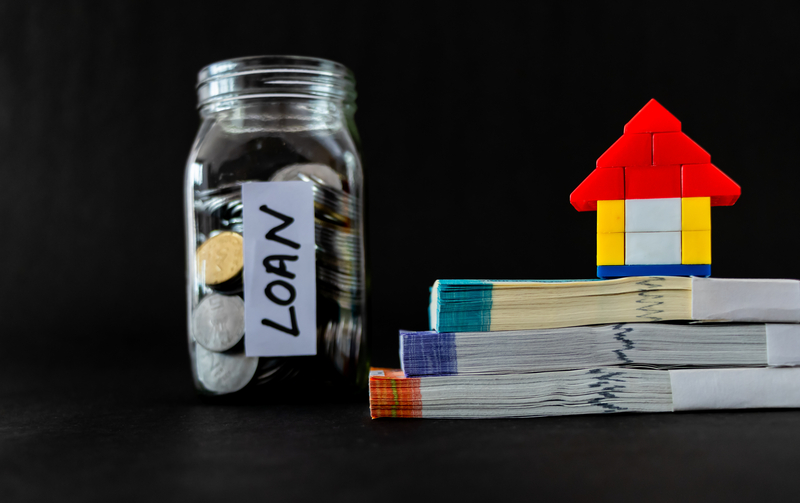Singapore has among the highest home ownership rates globally in the world, and owning a home is a cherished dream for many of us. Yet, homes in Singapore are pricey, and potential homeowners have to pay attention to their finances. If you’re wondering “can I take a home loan after a personal loan”, read on.
Can I take a home loan after taking a personal loan?
Well, it depends.
Assuming that you fulfil the prerequisites to sign up for a home mortgage in Singapore, the amount you can borrow on your home loan will depend on two things: your Total Debt Servicing Ratio (TDSR) and your Mortgage Servicing Ratio (MSR).
The Monetary Authority of Singapore (MAS) has introduced measures like TDSR and MSR to help borrowers in Singapore manage their debt obligations. Financial institutions such as banks and legal money lenders are obligated to ensure borrowers do not exceed the limits imposed under TDSR and MSR.
As a result, aspiring home buyers have to know their TDSR and MSR, or they may risk being denied the mortgage they need.
Understanding Total Debt Servicing Ratio (TDSR)
The first component to understand is the TDSR. This is a measure of how much of your gross monthly income goes towards debt payments each month. This includes unsecured debt such as credit card debt and personal loans, as well as home mortgage payments.
TDSR has a maximum threshold of 55% of your gross monthly income. In other words, the combined sum paid towards unsecured debts and mortgages cannot exceed 55% of your monthly earnings.
(Note that for variable income such as commissions, bonuses, and allowances, as well as rental income, only up to 70% can be counted towards your gross income. For simplicity, we will be treating all income as regular income from this point onwards.)
| Gross monthly salary | TDSR 55% cap |
| $4,000 | $2,200 |
Assuming your gross monthly salary is $4,000, your debt limit is S$2,200 each month. Once this cap is reached, you will not be able to take on further debt.
Note that this debt limit is shared between mortgage payments and all other unsecured debts. Thus, having unsecured loans (personal loans, education loans, payday loans, etc) or credit card balances will affect how much you can borrow for your home loan.
Understanding Mortgage Servicing Ratio (MSR)
TDSR isn’t the only limit that homeowners have to be wary of. They also have to manage their Mortgage Servicing Ratio (MSR).
Think of MSR as a sub-limit under the TDSR. Under the MSR, your monthly mortgage payments must not exceed 30% of your gross monthly income.
| Gross monthly salary | MSR 30% cap |
| $4,000 | $1,200 |
This means that if your gross monthly salary is $4,000, your mortgage payment limit is $1,200 per month.
However, don’t forget that due to the TDSR, you may not be able to borrow up to your maximum mortgage payment limit of 30% of gross monthly income.
How do TDSR and MSR affect you
Now that we understand what TDSR and MSR are, and their respective limits, let’s take a look at how they impact your home loan.
| Gross monthly salary | $4,000 |
| TDSR (55%) | $2,200 |
| MSR (30%) | $1,200 |
| Personal loan instalment | $800 |
| Maximum monthly home loan instalment | $1,200 (cannot exceed MSR) |
Consider the above scenario. Recall that with a gross monthly salary of $4,000, the TDSR is $2,200 and MSR is $1,200. In this case, you can borrow up to your MSR limit in your home loan, even though you have an existing personal instalment loan of $800 each month.
(Actually, TDSR of $2,200 minus personal loan of S$800 = $1,400. However, since you cannot exceed the MSR, your maximum mortgage payment is $1,200 in this case.)
However, what if you also have other unsecured debt or higher loan payments?
| Gross monthly salary | $4,000 |
| TDSR (55%) | $2,200 |
| MSR (30%) | $1,200 |
| Unsecured monthly debt (personal loans, car loans, credit cards, etc) | $1,500 |
| Maximum monthly home loan instalment | $700 ($2,200 – $1,500) |
If your unsecured debt payments add up to $1,500 a month, you can only borrow up to $700 in monthly mortgage payments – even though your MSR is actually $1,200.
This is because of the 55% TDSR cap; essentially, your unsecured debts and other debts have taken up part of the quota for your home loan payments, reducing the size of your mortgage.
Borrowing too much in personal loans can affect your ability to own a home
So the answer to the question “Can I take a home loan after a personal loan” is yes, provided your personal loan amount (and other loans and unsecured debt) is not too high.
Here are some tips for aspiring homeowners to manage the balance between TDSR and MSR.
- Pay off your personal loans and unsecured debt before embarking on your property purchase.
- Restructure existing loans to increase the repayment period. This will lower the monthly instalment amount, which can be allocated to your home loan payments.
- If you must take on a new personal loan, try to borrow a smaller amount, and opt for a longer loan tenure to limit your monthly repayments.
- As the TDSR and MSR are calculated based on your gross monthly income, another solution is to increase your salary or earnings. This will give you higher limits to work with.
- Similarly, you could also jointly apply for a mortgage with your working spouse for a larger home loan. Just be aware that your spouse’s TDSR will also be taken into account.
- Keep your unsecured debt to under 25% of your gross income.
Elite Investment and Credit is a leading provider of personal loans to meet your urgent financial needs. Talk to us today about our low-interest rate loans.
About the Author

Jasbir Kaur
No fuss, No stress. You can count on me to get the facts right.

